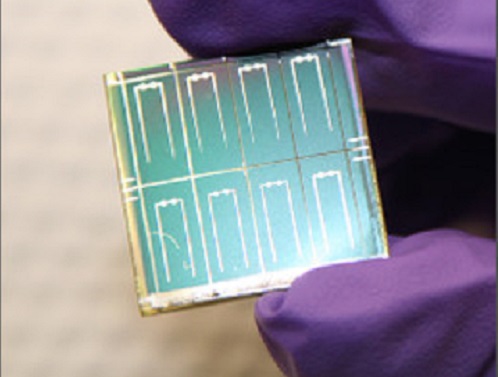Scientists at the University of Luxembourg and the Japanese electronics company TDK report progress in photovoltaic research: they have improved a component that will enable solar cells to use more energy of the sun and thus create a higher current.
The improvement concerns a conductive oxide film which now has more transparency in the infrared region. Similar attempts had been made before, but this is the first time that these films were prepared by a one-step process and, at the same time, stable in air.
“The films made at the University of Luxembourg have been exposed to air for one and half years and are still as conductive as when they were fresh prepared”, says Prof. Susanne Siebentritt, head of the laboratory for photovoltaics at the University of Luxembourg. “It is a fantastic result, not only for solar cells, but also for a range of other technologies”, she adds. Collaborators of this study were Dr. Matěj Hála, research associate in the laboratory for photovoltaics and Shohei Fujii and Yukari Inoue, visiting scientists from TDK.
Transparent conductive oxides are used in any device combining electronics and light, like LEDs, solar cells, photodetectors or even touch screens. They have the particularity to combine the properties of metals, which are the best electrical conductors known, with those of oxides, which usually are transparent but not conductive, as for example glass. In solar cells the film has to be conductive because it constitutes the upper electrode. At the same time it has to be transparent in order for sunlight to reach the layer underneath, where the current is formed.
The oxides forming this film can be made conductive by deliberately adding impurities. Zinc oxide with aluminium added is a widely used example. In this case, the aluminium adds free electrons to the zinc oxide which are responsible for the conductivity. However, these free electrons also absorb infrared light. That means that less sun energy can pass through.
The team of the University of Luxembourg and TDK have modified the process used to make the film in order to make pure zinc oxide more conductive. “Our multidisciplinary team, benefitting from the exchange of knowledge across countries, had the idea to add an additional component – another gas plasma – in the so called sputter process. This makes the material conductive even without aluminium.” explains Prof. Siebentritt.
This method enables to have less but faster moving free electrons. “With this result, the conductivity is similar to the one with aluminium, but it enables a much better transparency in the infrared region as less free electrons cause also less absorption. That makes solar cells more efficient”, adds Dr. Matěj Hála. The findings are now published in the respected journal “Progress in Photovoltaics”.
References:
Publication: Matěj Hála, Shohei Fujii, Alex Redinger, Yukari Inoue, Germain Rey, Maxime Thevenin, Valérie Deprédurand, Thomas Paul Weiss, Tobias Bertram, Susanne Siebentritt. Highly conductive ZnO films with high near infrared transparency. Progress in Photovoltaics: Research and Applications, 2015
Story: Researchers enable solar cells to use more sunlight | Université du Luxembourg — February 25, 2015












Comments